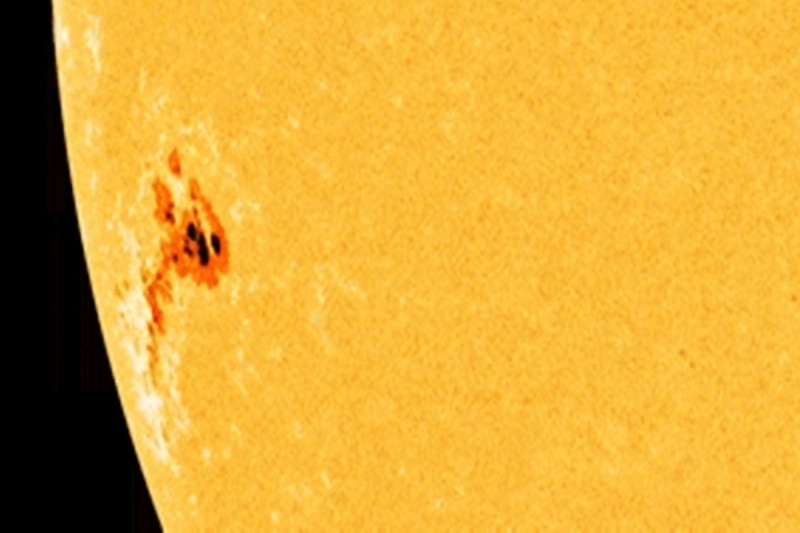Massive ‘Martian Sunspot’ Visible From Mars is so Large. It Faces Earth now

Now facing Earth is a sunspot so big it may be seen from the surface of Mars.
Spaceweather.com reports that the massive sunspot group AR3576, which is located over 200,000 kilometers (124,274 miles) in length, has at least four black cores that are each larger than Earth. Just last week, NASA’s Perseverance Rover took a picture of it from the surface of Mars.
Due to its size, the sunspot may be observed from Earth without the use of specialized viewing equipment. Put on some authorized eclipse glasses, then raise your gaze! Use our helpful sun viewing guide to learn more about safe sun viewing techniques.
Sunspots are cooler, darker areas of the sun’s surface that have the potential to produce violent eruptions like solar flares and coronal mass ejections (CMEs), which are massive outbursts of plasma and magnetic field from the sun.
During the 11-year solar cycle, which is fueled by the sun’s magnetic field, the frequency and intensity of sunspots that are visible on the surface can be used to predict the degree of solar activity at any particular time. Sunspot regions like AR3576 are occurring more frequently as we get closer to solar maximum, the highest rate of activity.
The National Oceanic and Atmospheric Administration (NOAA) estimates indicate that the magnetically complex sunspot may be a hazard for X-class solar flares, which are the strongest kind of solar flare. The sunspot is already exploding with M-class solar flares.
When magnetic energy accumulates in the solar atmosphere and is released as a powerful flare of electromagnetic radiation, solar flares are set off. They are divided into lettered groups according to size, with X-class being the strongest. After that, there are flares classified as M-class, which are ten times smaller than X-class flares, C-class, B-class, and lastly A-class, which are too weak to have a noticeable impact on Earth. Numbers ranging from 1 to 10 (and higher, for X-class flares) indicate the relative strength of each class of flare.
CMEs can also accompany strong solar flares. When CMEs strike Earth, they can cause disruptions to our magnetosphere, which can lead to geomagnetic storms. These storms can then produce breathtaking aurora displays closer to equatorial regions than is often feasible in calm weather.
Since powerful solar flares and CMEs can cause issues for satellites in orbit and even electronic devices on Earth, solar and space weather scientists are closely monitoring the sun.
Every day, researchers at NOAA’s Space Weather Prediction Center examine sunspot regions to determine the risks. To assess solar activity and enhance space weather forecasting, the Royal Observatory of Belgium’s World Data Center for the Sunspot Index and Long-term Solar Observations keeps track of sunspots as well as the highs and lows of the solar cycle.
Additionally, NASA maintains a series of spacecraft dubbed the Heliophysics Systems Observatory (HSO) that are intended to investigate the sun and its effects on the solar system, including space weather.